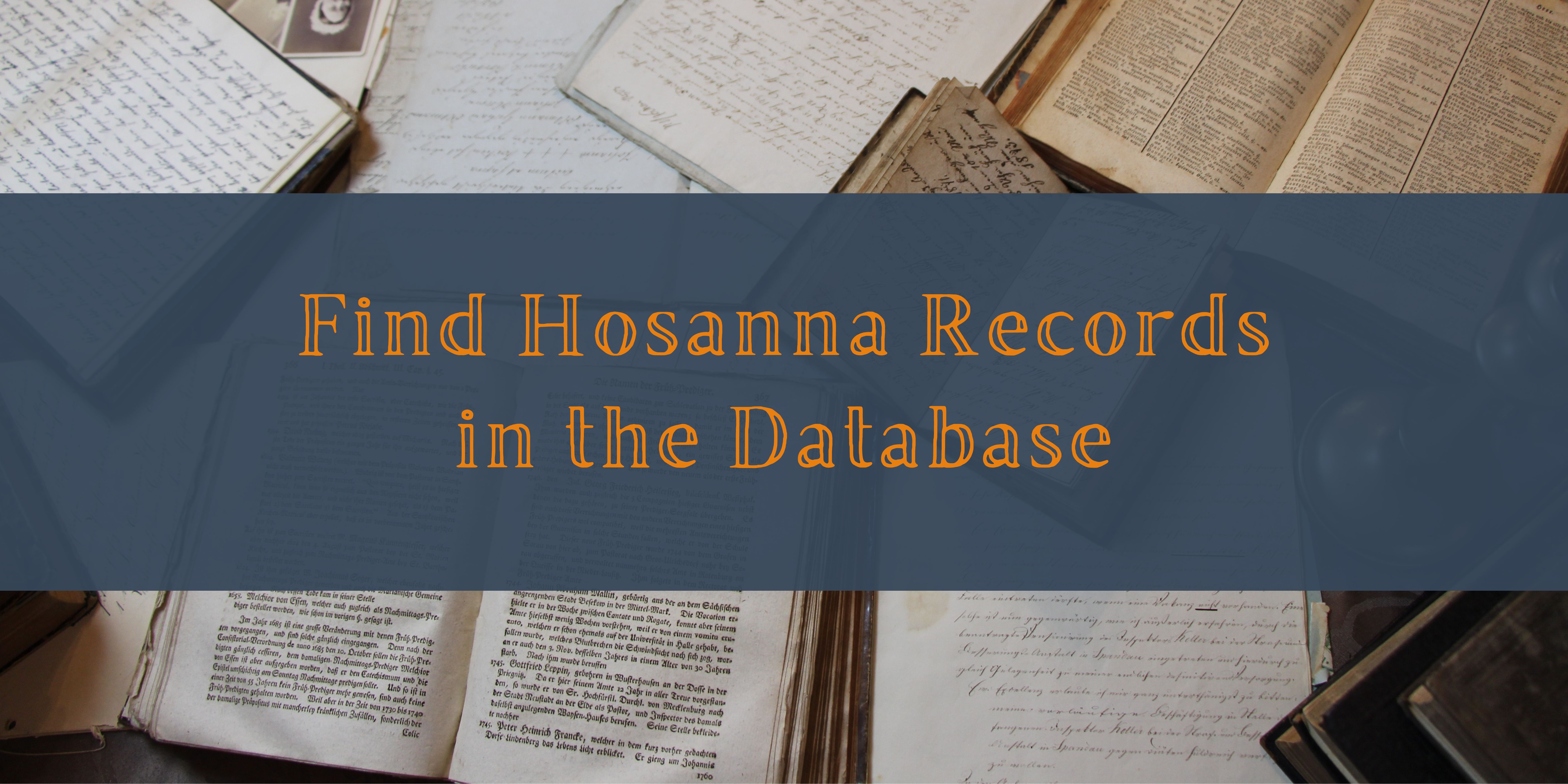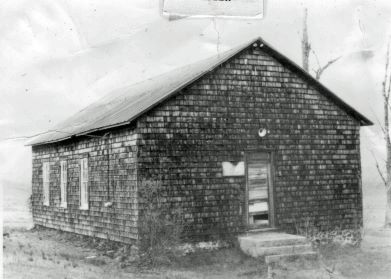The Hosanna School at Darlington
In 1822, a free African American man named Cupid Peaco (or Paca) purchased 50 acres of land north of the village of Darlington, in Harford County, Maryland. In 1868 his son Joseph, with his wife Sarah, sold ¼ acre of the land he had inherited to a group of trustees determined to build a school for the African American children of the area.[1] Once constructed, this school would become known as the Hosanna, or Berkley, School. But the process of making this school into a reality would prove an arduous one.
The five men who united to form the board of trustees for the new school were Alexander Berry, Joseph Haines, Stephen Jamison, Henry Prigg, and Jerome B. Armstrong, chairman of the building committee. All five were African Americans from the local community, and they now began raising funds, contracting for labor, and reaching out to the U.S. Bureau of Refugees, Freedmen, and Abandoned Lands (the Freedmen’s Bureau) for material assistance.
But the story of African American education after the Civil War does not begin with the construction of the schoolhouse in 1868. In the spring of 1865, a young woman named Edmonia Highgate arrived at Darlington. She had been sent by the American Missionary Association, the largest of the North’s aid and relief societies that sought to found and support schools among the freedpeople of the South.
Edmonia Highgate was born in Syracuse, New York, in 1844, to African American parents active in abolitionism. Despite her youth, she was invited to speak at the Colored Men’s Convention in Syracuse in 1864. Before being sent to Darlington she had taught in Pennsylvania, New York, and most recently in Virginia. In 1864 Highgate described herself to the AMA as:
“[A]bout twenty years of age and strong and healthy. I know just what self-denial, self-discipline and domestic qualifications are needed for the work and modestly trust that with God's help I could labor advantageously in the field for my newly freed brethren...”[2]
With no schoolhouse to teach in, Edmonia Highgate would have to conduct her classes within the nearby Hosanna African Methodist Episcopal (AME) church. This she did for only a semester, after which the AMA sent her to teach at New Orleans, Louisiana. She was briefly succeeded at Darlington by her mother, Hannah Highgate.
For the fall school term of 1865, the AMA sent a new teacher, one who would prove herself excellent both in the classroom and without. Mary E. Watson was an African America woman born in Newport, Rhode Island, in 1840. After graduating from the Rhode Island State Normal School in1858, she began her teaching career in her home state. As the Civil War neared its end, Watson wanted to help educate the newly freed people of the South. She reached out to the American Missionary Association in hopes of obtaining a teaching position, telling them:
“My sympathy has always been with the outcast Slave (since the dawn of Emancipation). I feel that God calls me to work for them, to devote my time to those, who have so long been trodden under foot, so long born the heat, and burden of the day; too long been denied[.]”
The AMA accepted Watson into their pool of educators, posting her to a school in Norfolk, Virginia, in the spring of 1865, before reassigning her to Darlington, Maryland to teach the fall term of that year. Like her predecessors, she initially used the Hosanna AME church as a schoolroom, but while doing so she began to advocate for the construction of a dedicated school building that would better accommodate her students. In March 1866, Mary Watson reported that local Quakers (a frequent source of support for black education in Maryland) had already given $100 toward the cause of building a school, and that the school trustees, “very worthy, efficient men,” were working on sourcing materials, including the stone required for the foundations.[3]
In January 1868, the school trustees executed their deed with the Peacos, obtaining land to construct the school building. They then sent their deed to the Freedmen’s Bureau, which required proof of property ownership before they would begin supplying a school project with building materials. For the next several months the structure came together, with lumber largely provided by the Bureau and labor contracted locally by the school trustees, led by Jerome Armstrong. The building was an ambitious structure of two stories, requiring more materials than the Freedmen’s Bureau typically provided, and was proving difficult to finish. On October 8, 1868, Armstrong announced to the Bureau:
“I have at last the pleasure to inform you the house is now ready for plastering. We have not been furnished with enough of some articles for school house part such as shingles lumber for sheathing &c. but we have furnished it so far it will be ready I hope in a few weeks for you to dedicate and give a name we are without Desks and it will need about 28. or 30. with teachers Desk I suppose please inform us if you will furnish them we have to furnish two stoves for the winter[.]”[4]
Two weeks later Armstrong wrote again, pleading for more support. He explained that the trustees had accrued over $400 in debt due to labor costs, adding that:
“Our school is a burden for an uneducated class as yet. And we are only asking only for that which was promised to us and the reason we ask is because we are not able to furnish ourselves without going [too] much in debt and we already are far enough in now. We have a willing people here but a poor people in means and the boiler is now on a strain it is all the pressure it will bear.”[5]
In the same letter, Armstrong stated that they expected the Bureau to supply them with desks for the schoolroom. The matter of supplying desks would become a particular sticking point in the completion of the schoolhouse. On January 5, 1869, Jerome Armstrong wrote once again of this need, while praising Mary Watson:
“There is not one any better, and indeed she should have a position where her sckill could be fully developed Desks I want & I can not get the means myself, them that would do can-not because they are like myself there means are limited, there is a few might do more one or two but I can assure you that M. E. Watson have difficulties to contend against that is not pleasant & I think that very few teachers of her ability would let pass.”[6]
In response to Armstrong’s urgent need for school furniture, the Bureau’s education superintendent for the state, John Kimball, recommended to his superior that $50 be provided to furnish desks for the school. But Major Swaim, the Freedmen’s Bureau Assistant Commissioner for the state and the man with ultimate control over funding, rejected Kimball’s recommendation. “By reference to the books,” wrote Swaim, “it appears that already $560.00 have been expended in this School house, and it is not adviseable to incur any more expenses for this School.”[7]
Despite the continued lack of desks, Mary Watson’s monthly reports to the Freedmen’s Bureau suggest that classes began meeting in the new building in January 1869. As built, the new school was a two-story structure measuring 24 x 36 feet. The first story consisted of a vestibule and a main room for use as a classroom. The single room on the upper floor was perhaps intended in part as eventual expansion space for teaching, but in practice served as meeting space for the Hosanna Church.
A month after opening the new schoolhouse, Mary Watson had 57 students enrolled. She had not started either an industrial school or a sabbath school. Sadly, after doing so much to make the new school building a reality, Mary Watson would teach only one semester there. Like other freedmen’s aid societies, by the summer of 1869, the American Missionary Association faced funding problems. Unable to support Mary Watson’s salary at Darlington unassisted, they chose to transfer her to the school at Port Deposit, just across the Susquehanna River, in Cecil County, Maryland. In this county, unlike Harford, the local government had begun supporting schools with taxpayer money, including partially paying teacher salaries. Left with the prospect of having no teacher to replace the formidable Watson for the fall of 1869, the trustees wrote to the Freedmen’s Bureau in September to request a new teacher.
In October 1869, Phenia C. Crisfield arrived to take over teaching at Darlington. Rather than the AMA, she was supported by the Pennsylvania Freedmen’s Relief Association, a Philadelphia-based organization. Crisfield completed the fall term and stayed for the spring term of 1870. In the fall of 1869 she reported only 20 to 25 students enrolled, but by the start of the spring semester of 1870 she could report 60 students. Like Mary Watson, she made no effort to teach an industrial (sewing) school or a Sunday sabbath school. In April 1870, the Pennsylvania Freedmen’s Relief Association announced that they would no longer support teachers after the following month. Phenia Crisfield was transferred to a school in Frederick County, Maryland, perhaps to be funded by the local school system there.
The Freedmen’s Bureau too began scaling down their operations in 1870 and ceased to exist entirely in 1872. The schools that it and the several Northern aid societies had administered in Harford County eventually became part of the local public school system. Hosanna School began to be administered by the Harford County School Commission in 1879. Learning continued at Hosanna for decades thereafter, but the condition of the building deteriorated. Despite the structure being officially condemned for school use in 1907, students and teachers continued to meet there until 1945.
Three years later, in 1948, a group of local African American men created Hosanna Community House, Inc. Their intent was to preserve the structure as a community meeting place. Their efforts faced a challenge in 1953. In October of that year Hurricane Hazel tore through the mid-Atlantic states, and among the property it destroyed was the Hosanna School’s second floor, which was sheared off the structure, leaving the ground floor rooms intact. The corporation had a new metal roof placed over the surviving ground floor, and for decades the schoolhouse would remain a single-story structure.
In 1983, Hosanna Community House, Inc. received funds from the state of Maryland to stabilize and repair the schoolhouse. After years of labor, a grand opening and rededication of the restored building was held in September 1994. Work continued, eventually leading to the reconstruction of the missing second floor, which was completed in 2005.
By James Schruefer
[1] The Peacos sold the ¼ acre for a mere $5, making the transaction more a donation than a sale for private gain.
[2] Edmonia G. Highgate to George Whipple, 18 Jan. 1864, American Missionary Association.
[3] Mary E. Watson to S. Hunt, 3 Mar. 1866, American Missionary Association.
[4] Jerome B. Armstrong to E H Monteith, 8 Oct. 1868, Letters Received, Records of the Superintendent of Education for the Disctrict of Columbia, RG105, National Archives.
[5] Jerome B. Armstrong to John Kimball, 23 Oct. 1868, Letters Received, Records of the Superintendent of Education for the Disctrict of Columbia, RG105, National Archives.
[6] Jerome B. Armstrong to John Kimball, 5 Jan. 1869, Letters Received, Records of the Superintendent of Education for the Disctrict of Columbia, RG105, National Archives.
[7] Endorsements on Jerome B. Armstrong to John Kimball, 5 Jan. 1869, Letters Received, Records of the Superintendent of Education for the Disctrict of Columbia, RG105, National Archives.


